#Karel Krnka
Photo

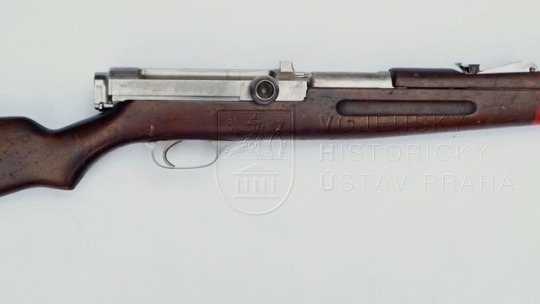
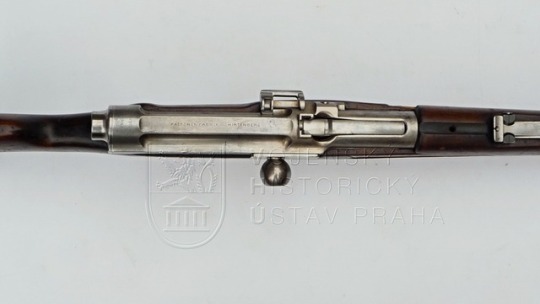
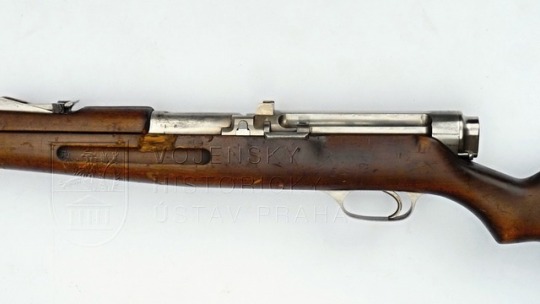
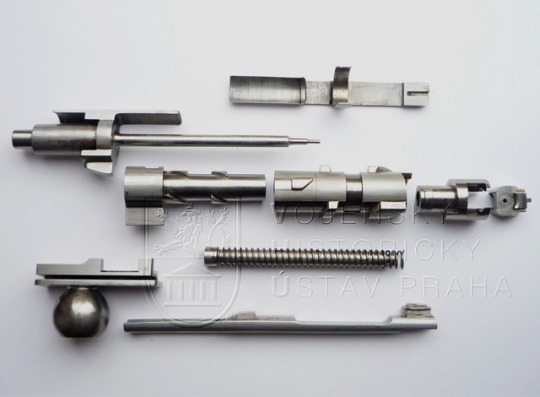
Krnka-Hirtenberg experimental self-loading rifle
The designer Karel Krnka (6 April 1858 - 25 February 1926) was an outstanding personality who made his mark in the history of firearms development in several ways. He can be ranked among the creators of repeating rifles and the pioneer of self-loading weapons and ammunition. His theoretical contribution to the design of self-loading firearms and the creation of a systematic classification of them is also notable.
The beginnings of Krnek's design efforts date back to 1882, when he adapted the Werndl M. 1873/77 army rifle to automatically eject fired cartridges and two years later designed a hinged firing accelerator for the same weapon, tested by the Austrian army. Between 1885 and 1891 he worked with his father Silvester Krnka on the construction of repeating rifles, but without success. During the 1890s, most European armies had already introduced repeating rifles of various systems, so the development of further designs seemed unpromising for Krnka. Together with the Swiss mathematician and physicist Hebler, he designed a series of experimental missiles aimed at reducing the cross-sectional load and reducing the calibre. From 1894 onwards, he devoted himself to the design of self-loading rifles, but it was only when he took up the post of technical director at the Georg Roth company in Vienna in 1898 that he was able to concentrate fully on the implementation of his own ideas. Undoubtedly, Krnek's greatest success was the introduction of a pistol of his design into the armament of the Austrian army under the designation Repetirpistole M. 7. Krnek's ten-year tenure at Roth was ended by the death of its founder in 1908, and the designer moved in early 1909 to the ammunition factory in Hirtenberg, where a number of his experimental designs were made. After the end of the war, the company sought civilian programs, and at that time Karel Krnka focused on the development of self-loading hunting rifles and pistols. At that time, however, his designs, which were especially true for self-loading pistols, did not reflect contemporary developments. He stayed in Hirtenberg until 1922, when he returned to the Republic and sought employment in the arms factories. He anchored in the Prague Armoury in Praga, where he designed a type of light machine gun and a self-loading rifle, the design of which he refined during his further work in the Czechoslovak Armoury in Brno.
The design basis of the experimental self-loading rifle, produced during Krnek's time at the Hirtenberg Ammunition Factory, dates from 1908 and its functional principle is based on Austrian patent No. 40 385, filed on 8 October 1908. The initial impulse of the wound development, transmitted to the carrier, was provided by the inclined surface of the bolt head. The complicated bolt consists of 11 components and the weapon is equipped with experimental 7 mm calibre bottle-shaped cartridges. The feeding mechanism consists of a coil cartridge box with a capacity of 5 rounds. The sight scale has no markings as it is a sample made for functional testing only.
The specimen was acquired by the VHÚ in 1983 by transfer from the Military Academy of Antonín Zápotocký (VAAZ) in Brno.
Calibre: 7 mm Krnka experimental
Total length: 1243 mm
Intentional length: 578 mm
Barrel length: 692 mm
Capacity of coil cartridge box: 5 rounds
Weight of weapon: 4130 g
Translated with www.DeepL.com/Translator (free version)
#Karel Krnka#1908#self-loading#experimental#firearm#gun#weapon#antique#austria-hungary#long arm#1900s
66 notes
·
View notes
Photo
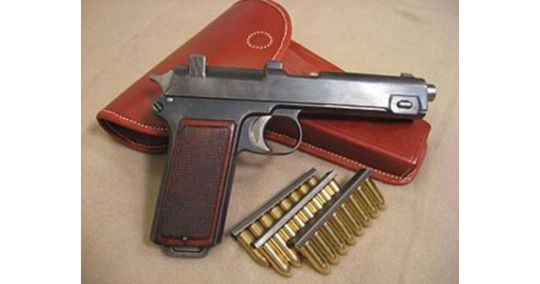
Steyr M1912 (Austria)
This article includes a list of references, but its sources remain unclear because it has insufficient inline citations. Please help to improve this article by introducing more precise citations. (June 2013) (Learn how and when to remove this template message) Steyr M1912 Steyr M1912 with box and magazine charger clip of 9×23mm Steyr ammunition Type Semi-automatic handgun, Machine pistol Place of origin Austria-Hungary Service history Used by Austria-Hungary Austria Nazi Germany Kingdom of Italy Italian Social Republic Chile Kingdom of Romania Wars World War I World War II Production history Designer Karel Krnka Manufacturer Steyr Produced 1912–1945 Number built Up to 300,000 Variants Doppelpistole M.12 Specifications Weight 1.2 kg (2.6 lb) Length 216 mm (8.5 in) Barrel length 128 mm (5.0 in) Cartridge 9mm Steyr (Austro-Hungarian) 9mm Luger (German) Action Recoil operated Muzzle velocity 1,120 ft/s (341 m/s)[a] Effective firing range 50 m (160 ft) Feed system 8-round integral magazine, fed by stripper clips Sights Iron sights The Steyr M1912, also known as the Steyr-Hahn, is a semi-automatic pistol developed in 1911 by the Austrian firm Steyr Mannlicher and designed by Karel Krnka, based on the mechanism of the Roth–Steyr M1907. It was developed for the Austro-Hungarian Army and adopted in 1912 as the M1912. It was in service in a limited capacity for the Wehrmacht until the end of World War II. The M1912 was originally chambered for the 9mm Steyr round, but after the annexation of Austria by Germany in 1938 the M1912 was taken into Wehrmacht service and about 60,000 were rechambered in 9mm Parabellum and remained in service until the end of the war.
More details Android, Windows
0 notes
Photo

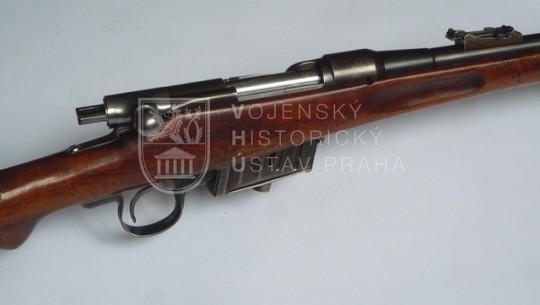
Krnka experimental rifle
In 1888, the designer Karel Krnka (1858-1926), together with his father, initiated the founding of The Krnka Repeating Rifle Company based in London. Its aim was, among other things, to promote the rifles of both designers in the armaments of various countries of the world. During the relatively short period of the company's existence, which ceased to exist in 1891, four different prototypes in .303 British calibre were successively produced. Only three of these have survived to the present day.
The rifle marked Krnka I was acquired by the museum from the MNO in 1923 from the collection depot in Milovice.
Translated with www.DeepL.com/Translator (free version)
#Karel Krnka#1888#bolt action#experimental#weapon#gun#firearm#antigue#rifle#long arm#antique#1800s#1880s
7 notes
·
View notes
Photo
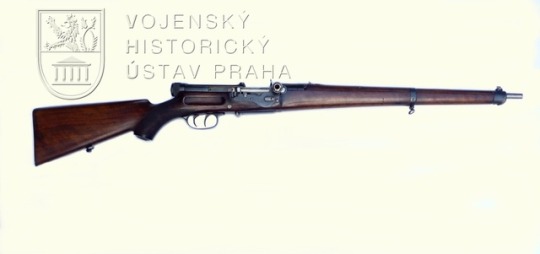
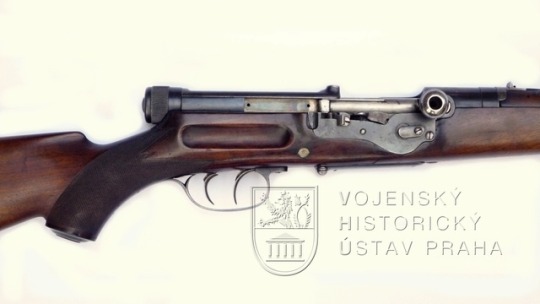

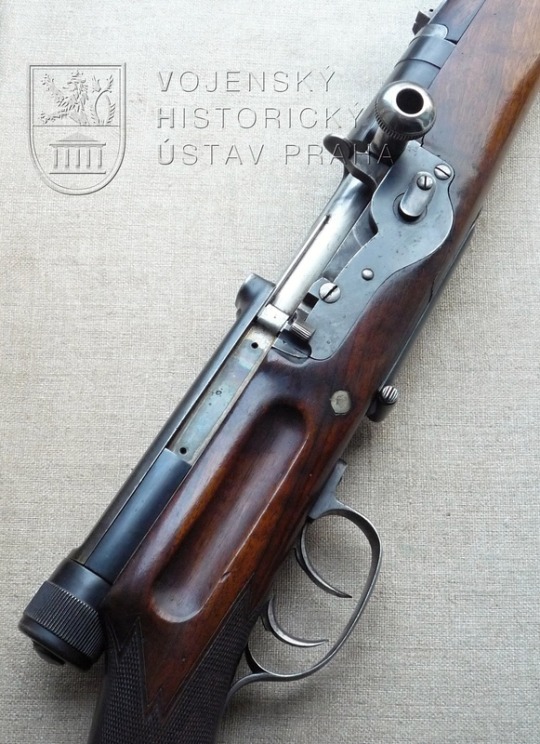
Kühne 1908 self-loading rifle
In every museum collection, there are objects whose classification and identification pose more or less problems for curators. Although the literature on small arms is now very extensive, there are still constructions that have completely escaped the attention of experts. One of them is a hunting self-loading rifle with an unusual design of the percussion mechanism. Due to its unusual design, it was considered at the time to be one of the experimental weapons of the designer Karel Krnka. And it remained so for many years to come.
The design of the weapon, which lacks any signature or serial number, is so atypical that it cannot be assigned to any of the known designs. A completely anachronistic element is the percussion mechanism, consisting of a rotary cock located on the left side of the breech housing. The percussive surface of the tap strikes the head of the obliquely placed firing pin, which protrudes from the shank of the breech handle. The system of operation of the weapon is based on the principle of a locked bolt with a short recoil of the barrel. The bolt has two symmetrically arranged locking teeth in the front part, but unlike other designs, it is not rotatable. The bolt is connected to the barrel by a 90° rotation of the spring-loaded barrel. The feeding mechanism consists of a cartridge box with a removable bottom and a feeder sprung by two leaf lips. The full-length weapon is equipped with a German cocking device and the stock has a pistol grip with classic herringbone roughening of the grip surfaces.
The patent literature, so often neglected, can help in many cases to identify the gun or its designer, not to mention the chronology. German patent file number 212,840, titled Rückstosslader mit gleitendem Lauf und doppelseitiger Warzen- Drehwerriegelung, issued on 30 June 1908 in the name of Paul Kühne of Berlin, shows an identical locking system for the weapon, including the percussion mechanism and locking mechanism. Less than a year earlier, the same designer had applied for patent protection for a trigger mechanism conceptually corresponding to the solution applied to a hunting rifle in the collections of the VHI. Patent file number 209 409, acknowledged on 23 August 1907, is entitled Abzugsvorrichtung für Feuerwaffen mit am Abzug gleitendem, federnden Abzugsstollen.
While the discovery of both patent files made it possible to identify the weapon, the question still remains as to who Paul Kühne actually was and what role his experimental designs played in its development. The hunting design of the weapon in the collections of the VHÚ would suggest that Kühne was attempting to apply his design in the civilian sphere.The museum acquired the specimen in 1958 from the Main Administration of Public Security in Prague.
Calibre: 7.92 mm Mauser
Overall length: 1070 mm
Barrel length: 516 mm
Intentional length: 414 mm
Ammunition box capacity: 5 rounds
Weight: 3310 g
Translated with www.DeepL.com/Translator (free version)
103 notes
·
View notes
Photo
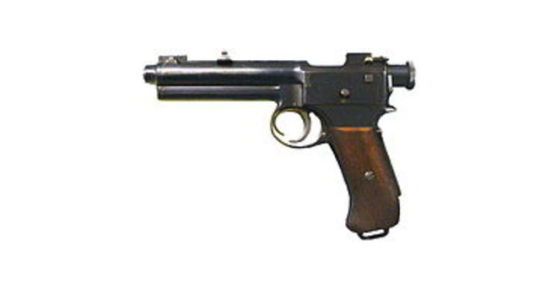
Roth–Steyr M1907 (Austria)
Roth–Steyr M1907 Type Semi-automatic pistol Place of origin Austria-Hungary Service history In service 1909–1945 Used by Austria-Hungary, Austria, Kingdom of Hungary, Kingdom of Italy, Poland, Kingdom of Yugoslavia, Czechoslovakia Wars World War I, World War II Production history Designer Karel Krnka Designed 1900 Manufacturer Œ.W.G. in Steyr F.G.GY. in Budapest Produced 1908–1914 Number built 99,000 Specifications Weight 1,030 g (36 oz) Length 23 cm (9.1 in) Barrel length 13 cm (5.1 in) Cartridge 8mm Roth–Steyr Action Recoil operated Muzzle velocity 330 m/s (1,100 ft/s) Effective firing range 75 meters Maximum firing range 140 meters Feed system 10-round integral box magazine, fed by stripper clip Sights Iron The Roth–Steyr M1907, or, more accurately Roth-Krnka M.7 was a semi-automatic pistol issued to the Austro-Hungarian Kaiserliche und Koenigliche Armee cavalry during World War I. It was the first adoption of semi-automatic service pistol by the land army of a major power.
More details Android, Windows
0 notes